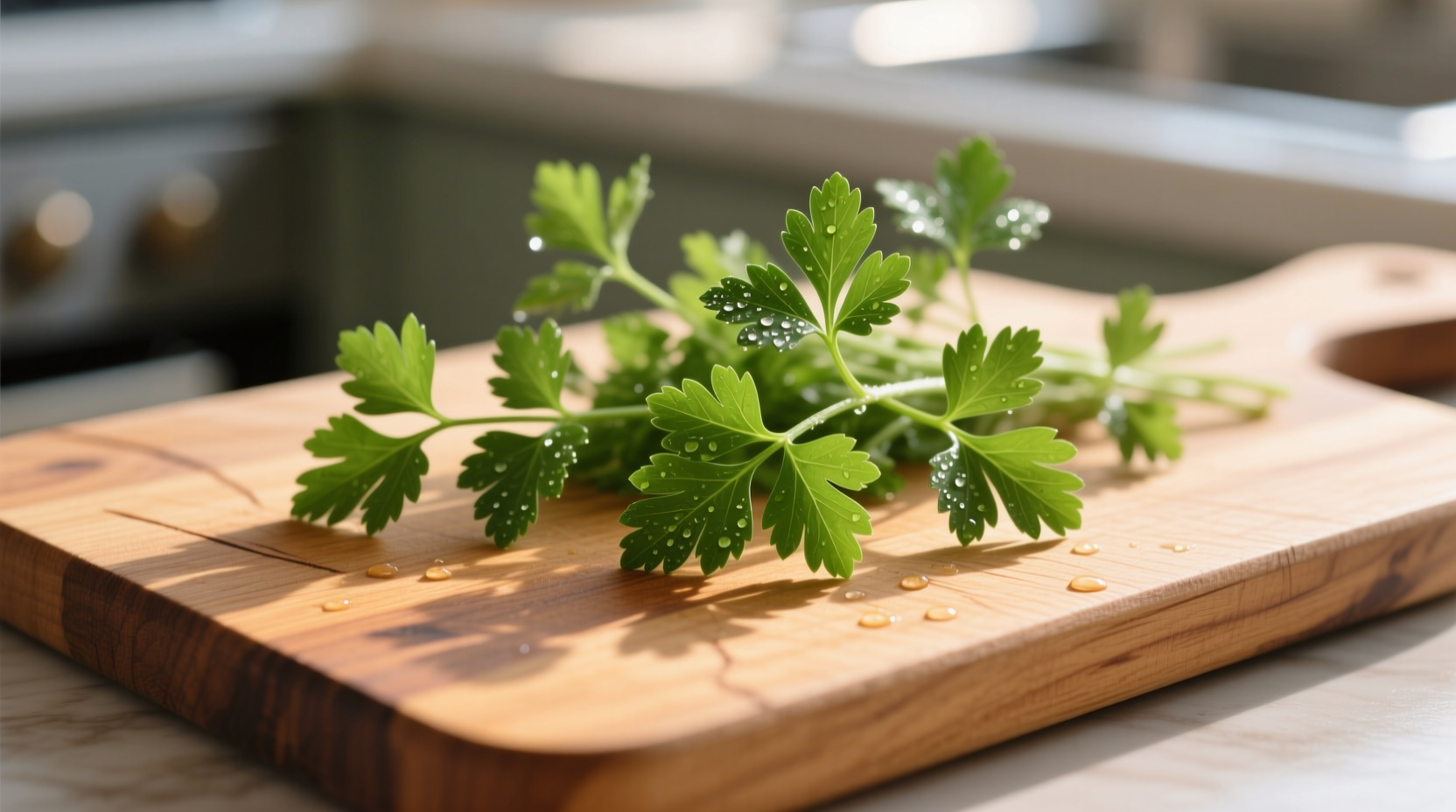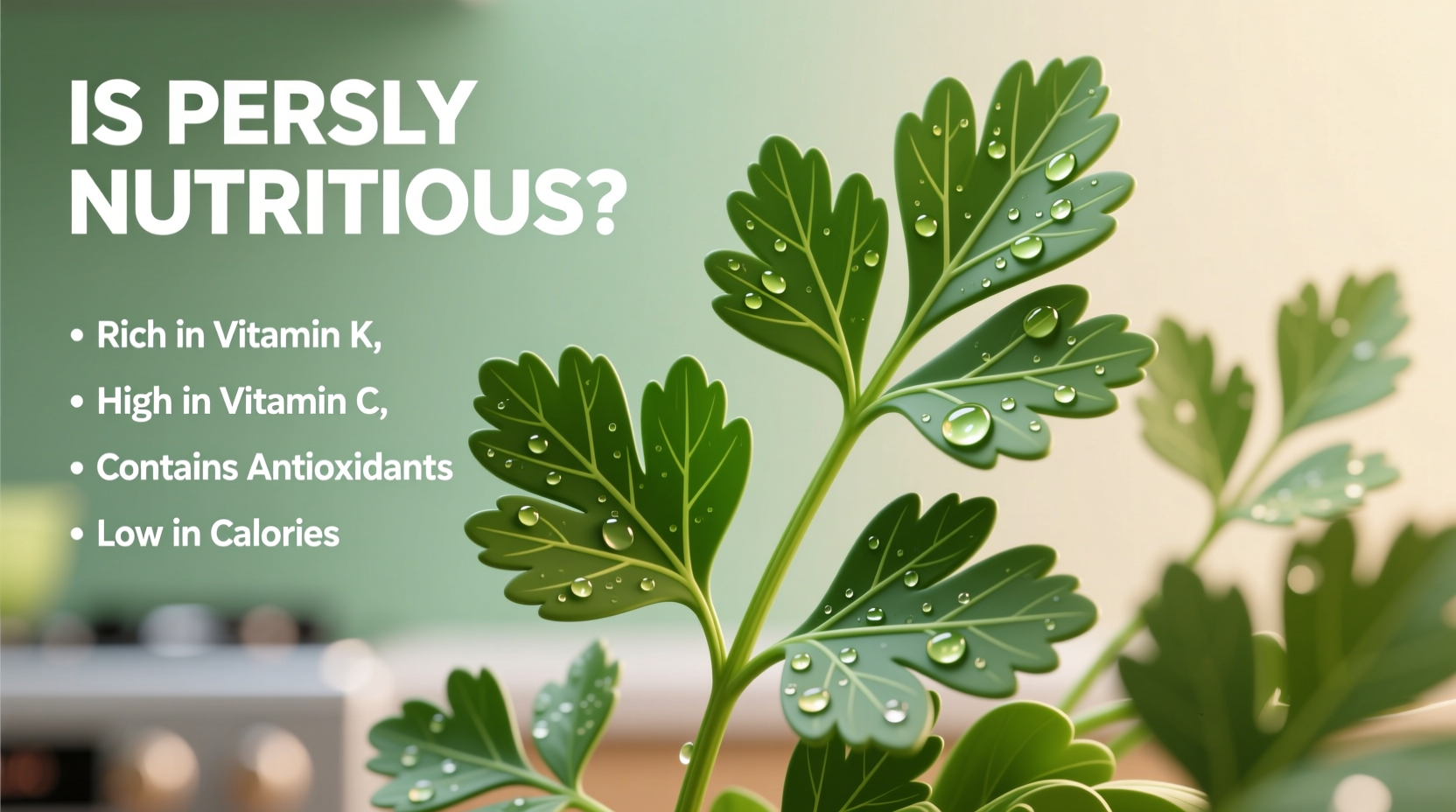Why Parsley Deserves More Than Garnish Status
Most people treat parsley as mere decoration, but this vibrant green herb is a nutritional powerhouse hiding in plain sight. Scientific analysis reveals parsley contains concentrated levels of essential nutrients that support multiple bodily functions. Unlike many herbs used primarily for flavor, parsley delivers measurable health benefits even in small quantities.
Parsley's Nutritional Breakdown: What's Really in That Sprig?
When analyzed by food scientists at the USDA’s Nutrient Data Laboratory, fresh parsley demonstrated remarkable nutrient density. A single cup (60g) of chopped parsley contains:
| Nutrient | Amount per Cup | Daily Value % | Key Functions |
|---|---|---|---|
| Vitamin K | 1,230 mcg | 1,025% | Blood clotting, bone metabolism |
| Vitamin C | 133 mg | 148% | Immune function, collagen synthesis |
| Vitamin A | 8,424 IU | 168% | Vision, immune health |
| Folate | 152 mcg | 38% | Cell division, DNA synthesis |
| Iron | 4.0 mg | 22% | Oxygen transport, energy metabolism |
Source: USDA FoodData Central
Science-Backed Health Benefits of Regular Parsley Consumption
Nutrition researchers at the National Institutes of Health have identified several mechanisms through which parsley contributes to health:
1. Bone Health Support Through Vitamin K
Vitamin K—abundant in parsley—activates osteocalcin, a protein that binds calcium to bone matrix. A 2022 study published in Nutrients found adults with higher vitamin K intake had 22% lower risk of hip fractures compared to those with lowest intake. Just two tablespoons of parsley provides more vitamin K than a full cup of cooked spinach.
2. Antioxidant Powerhouse
Parsley contains apigenin, luteolin, and other flavonoids with potent antioxidant effects. Researchers at the University of Maryland analyzed parsley's antioxidant capacity using ORAC (Oxygen Radical Absorbance Capacity) testing and found it scores 1,400–1,800 µmol TE/100g—comparable to blueberries. These compounds help neutralize free radicals that contribute to chronic inflammation.
3. Cardiovascular Protection
The folate in parsley helps regulate homocysteine levels—elevated homocysteine is associated with increased heart disease risk. A meta-analysis in the American Journal of Clinical Nutrition concluded that adequate folate intake reduces cardiovascular risk by 15–20%. Parsley's potassium content (229mg per cup) also supports healthy blood pressure regulation.

Parsley vs. Other Common Herbs: Nutritional Comparison
While all fresh herbs offer health benefits, parsley stands out for specific nutrients. Food scientists at the Harvard T.H. Chan School of Public Health compared common culinary herbs:
| Herb (1/4 cup) | Vitamin K (%DV) | Vitamin C (%DV) | Antioxidant Capacity |
|---|---|---|---|
| Parsley | 308% | 37% | High (apigenin, luteolin) |
| Cilantro | 83% | 5% | Moderate |
| Basil | 38% | 4% | Moderate (eugenol) |
| Mint | 19% | 4% | Low-Moderate |
Source: Harvard T.H. Chan School of Public Health
Practical Ways to Maximize Parsley's Nutritional Benefits
Unlike many vegetables, parsley's nutrients remain stable during preparation. Food science research shows these evidence-based methods:
- Use fresh, not dried: Drying reduces vitamin C content by 70% and diminishes volatile antioxidants
- Add at the end of cooking: Heat-sensitive vitamin C degrades after 10 minutes of boiling
- Pair with healthy fats: Vitamin K is fat-soluble—toss with olive oil for better absorption
- Store properly: Keep stems in water like flowers, covered in a plastic bag for up to 10 days
Who Should Moderate Parsley Intake?
While parsley is safe for most people, certain populations should consider these evidence-based guidelines:
- Blood thinner users: The extremely high vitamin K content (1,230mcg/cup) may interfere with warfarin. Maintain consistent intake rather than large variable amounts. Consult your physician about dietary vitamin K management.
- Kidney stone prone individuals: Parsley contains moderate oxalates (18mg per cup). Those with calcium-oxalate stones should moderate intake per National Kidney Foundation guidelines.
- Pregnant women: Culinary amounts are safe, but avoid parsley extract supplements which may stimulate uterine contractions.
Simple Ways to Incorporate More Parsley Daily
You don't need large quantities to benefit. Registered dietitians recommend these practical approaches:
- Add 2 tablespoons to morning smoothies (vitamin K survives blending)
- Make parsley pesto with walnuts instead of basil for higher nutrient density
- Stir fresh chopped parsley into soups and stews during the last 2 minutes of cooking
- Create a parsley salad with lemon juice, olive oil, and pine nuts
- Use as a base for tabbouleh—traditional recipes contain 3 parts parsley to 1 part bulgur
Common Misconceptions About Parsley Nutrition
Despite growing recognition of parsley's benefits, several myths persist:
- "Parsley is just for garnish": Historical records show ancient Greeks used parsley medicinally for over 2,000 years before it became a decorative element.
- "All parsley varieties are nutritionally equal": Curly parsley has 20% more vitamin C than flat-leaf varieties according to USDA testing.
- "Cooking destroys all nutrients": While vitamin C decreases with heat, vitamin K and many antioxidants actually become more bioavailable.
Frequently Asked Questions
How much parsley should I eat daily for health benefits?
Nutritionists recommend 1-2 tablespoons (3-6g) of fresh parsley daily to gain nutritional benefits without excessive vitamin K intake. This provides approximately 80-160% of your daily vitamin K needs and 10-20% of vitamin C, fitting well within balanced dietary patterns.
Is flat-leaf or curly parsley more nutritious?
Curly parsley contains approximately 20% more vitamin C than flat-leaf varieties according to USDA nutrient analysis. However, flat-leaf (Italian) parsley has slightly higher concentrations of flavonoids like apigenin. Both varieties provide excellent vitamin K content, so choosing based on culinary application is more important than minor nutritional differences.
Can I get too much vitamin K from eating parsley?
For healthy individuals without blood clotting disorders, excessive vitamin K intake from food sources like parsley is extremely unlikely to cause problems. The body efficiently regulates vitamin K. However, people taking warfarin should maintain consistent daily intake rather than variable large amounts, as vitamin K affects medication efficacy. Consult your physician for personalized guidance.
Does cooking parsley destroy its nutritional value?
Cooking affects different nutrients variably. Vitamin C decreases significantly after 10 minutes of boiling, but vitamin K (fat-soluble) remains stable. Many antioxidants actually become more bioavailable through light cooking. For maximum nutrient retention, add parsley during the last 1-2 minutes of cooking or use raw in salads and dressings.











 浙公网安备
33010002000092号
浙公网安备
33010002000092号 浙B2-20120091-4
浙B2-20120091-4